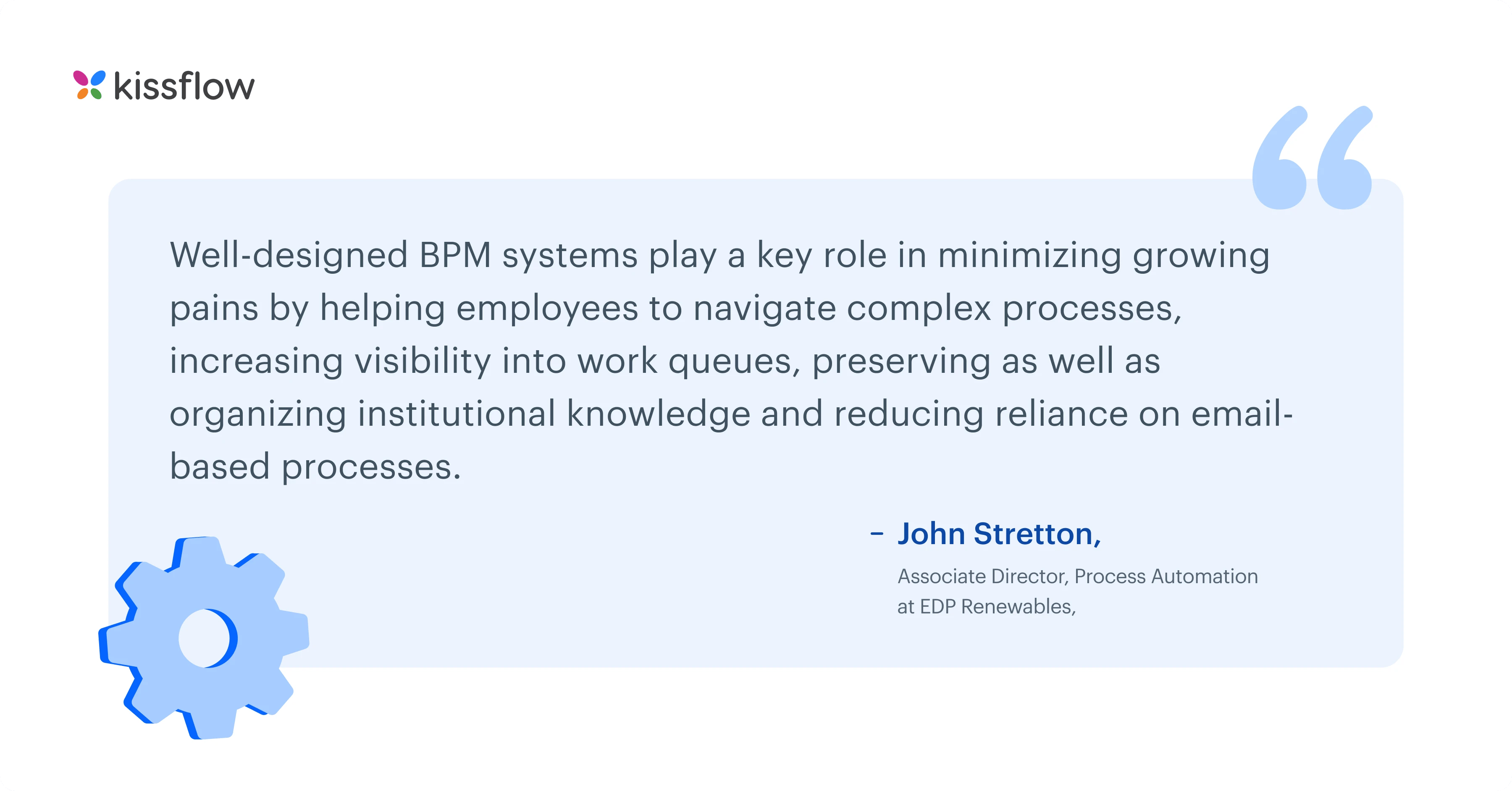Whether you are just starting a new BPM initiative or are looking for a way to improve what you already have in place, the secret is in setting the right BPM methodology. If your approach is strong, you’ll nearly always see great results. If it is weak, you probably won’t make any gains from your BPM work. Forrester claims that BPM initiatives can result in productivity benefits of 30 to 50 percent.
For BTPs, a strong BPM methodology provides the tools to manage and improve the technology that powers these processes. It enables better system integration, reduces redundancy, and fosters a culture of continuous improvement, driving technological innovation that aligns with business needs.
For CIOs, a well-defined BPM methodology offers clear visibility into process performance, helping identify bottlenecks and inefficiencies. It aids in prioritizing IT investments, ensuring they deliver maximum value and support the organization's digital transformation journey.
However, establishing a solid BPM methodology is not a one-time effort. It requires continuous refinement and adjustment in response to evolving business needs and market dynamics. Regular audits, reviews, and improvements will help keep your BPM strategy agile and effective.
Here are several ways to set and improve your BPM methodology.
What Is a BPM Methodology?
A BPM methodology is the way your organization approaches your processes. It defines not only the steps you follow when optimizing or building a process but also who will be responsible for achieving the expected gains. Many BPM methodologies are very similar, but understanding the differences is key to a great BPM project.

The Vital Background Questions of BPM Methodology
There are a lot of important questions that determine your BPM methodology. While many of them center on how you do BPM, there are several other very important questions to address. Here’s a short list of a few of them:
Who does BPM? Are you bringing in outside consultants or only using internal process owners? How will you train and educate these people? Who do these consultants report to?
How much authority does the BPM team have to change things? Are all of their recommendations implemented automatically? If not, under what circumstances are they accepted or rejected?
What are the primary goals for BPM? Cost reduction, time saved, greater clarity, happier customers? Who decides the primary outcome for each process?
How will BPM Practice efforts be evaluated? What primary and secondary metrics will be used to judge their success?
Which processes are addressed first? How do you determine where the greatest impact might be?
How often are business processes analyzed? Are they on a regular rotation, or only when certain metrics dip below acceptable levels?
The answers to many of these decisions may never be written down in a formal BPM methodology guidebook, but they have a great impact on the success of any BPM initiative.
Basic BPM Methodology
When most people think of BPM development methodology, they think of the specific steps taken during the analysis portion. You might say this is the core of a BPM methodology.
Every approach has its unique elements, but most of them are a variant of this process:
- See the Current Condition – How is it done now? Who is responsible for it? What works? What doesn’t?
- Identify Possible Changes – What limitations exist? What is the best “could-be” process?
- Design a New Process – Does it need to be digitized? What systems need to be linked? Will a BPM platform help?
- Test for Improvements – What key metrics will show what has changed for the better or worse?
- Monitor and Repeat – Is the process optimized, or can it be even better?
Best-Known BPM Methodologies
There are many well-established BPM methodologies you can choose from.
DMEMO
This methodology is one of the most popular and best-known in the world of BPM.
- Design – How are things done to complete a process?
- Model – What improvements can we make?
- Execute – How do adjustments actually work in flight?
- Monitor – Is the process actually getting better?
- Optimize – What more can be done?
DMAIC
You may recognize this methodology from Six Sigma.
- Define – Define the problem.
- Measure – Collect data on the current process.
- Analyze – Interpret the data and make suggestions.
- Improve – Make changes to the process.
- Control – Reduce deviations and make further improvements.
Popular BPM methodologies such as Lean and Six Sigma are very common for enterprise processes. Many of these focus on quality management and statistical analysis. Typically, you want to apply these methodologies to highly critical processes as it takes a lot of effort to gather data.
Other methodologies to examine are BP Trends and Rummler–Brache. You can find many more in the BPM Common Body of Knowledge book.
Build Your Own BPM Methodology, Or Use a Tested One?
There’s nothing wrong with building or borrowing. If you build your own methodology, you are making something custom and living that you have the freedom to constantly tinker with.
But if you choose one of the others, you can build on the top of practices the best minds in the world have come up with. Feel free to steal the best parts of each to define your own hybrid model. You don’t need to have your BPM methodology written out entirely on day one, but it should be clear enough to guide you.
Technology and BPM Methodology
One element to not forget about BPM methodology is the technology you plan to use. You may have the best BPM methodology in the world, but if your technology doesn’t support your strategies, they are useless. Sometimes, developing a methodology independent of a bpm tool just leaves you with no options later on.
But at the same time, you don’t want to compromise on your methodology to adapt to a BPM software solution.
It’s best to have an idea of the types of tools out there. If you are looking for something extremely flexible and lightweight that any business user can try, Kissflow is a great option.
Kissflow is a low-code cloud-based platform designed for automating business processes and tracking performance. It's user-friendly versatile, integrates with various software systems, and supports both structured workflows and unstructured cases.
It allows businesses to model their processes exactly as they are in real life, including parallel branches, user-specific actions, and more. This makes it a great tool for businesses looking to streamline operations, improve efficiency, and reduce manual work.















